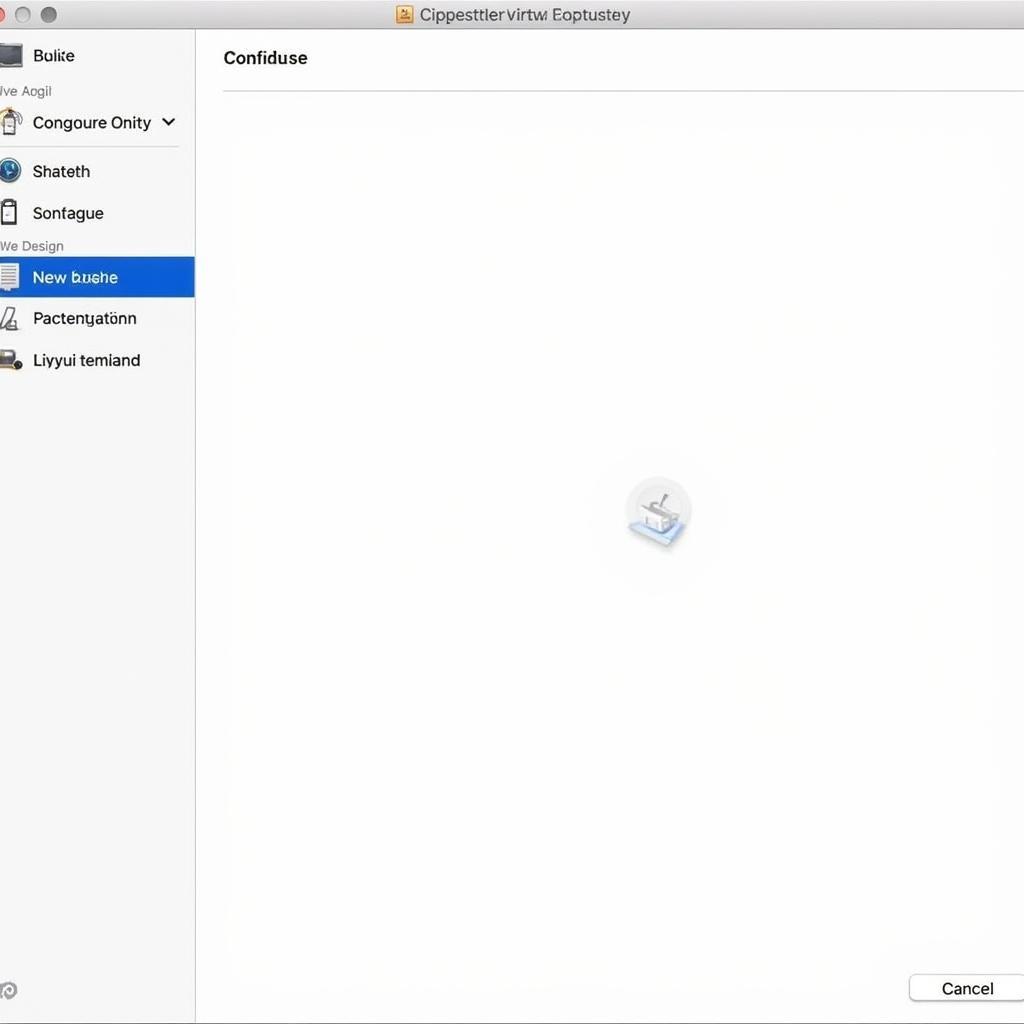Priming a fuel pump without VCDS can seem daunting, but with the right knowledge and approach, it’s a manageable task. This guide will walk you through various methods, explaining the process in detail and offering valuable insights for both DIY enthusiasts and professional mechanics. We’ll cover common scenarios, potential pitfalls, and offer tips for a smooth and successful fuel pump priming experience.
Understanding Fuel Pump Priming
Before diving into the how-to, let’s understand why priming is necessary. After a fuel filter change, fuel system repair, or when the car has run out of fuel, air can enter the fuel lines. This air pocket prevents fuel from reaching the engine, making it difficult or impossible to start the car. Priming the fuel pump essentially forces fuel through the lines, purging the air and restoring normal fuel flow. vcds prime fuel pump is often the go-to solution, but what if you don’t have access to this diagnostic tool?
Methods for Priming a Fuel Pump Without VCDS
Several methods exist to prime your fuel pump without VCDS. These techniques vary in complexity and effectiveness, so choose the one best suited to your situation and available resources.
Cycling the Ignition
This is the simplest method. Turn the ignition key to the “on” position (without starting the engine) for a few seconds, then turn it off. Repeat this process several times. Each cycle activates the fuel pump for a short duration, gradually pushing fuel through the lines. This method may require patience and several repetitions, especially in cases of significant air intrusion.
Jumping the Fuel Pump Relay
Locating and temporarily jumping the fuel pump relay is another effective method. Consult your vehicle’s service manual to identify the correct relay. With the ignition off, use a jumper wire to bridge the terminals that power the fuel pump. This will force the pump to run continuously, quickly priming the system. Remember to remove the jumper wire once the system is primed.
Using a Fuel Pressure Gauge
A fuel pressure gauge provides a more precise way to confirm successful priming. Connect the gauge to the fuel rail test port and observe the pressure reading while cycling the ignition or jumping the relay. This allows you to monitor the fuel pressure buildup and ensure the system is properly primed.
Manual Priming (Mechanical Pumps)
Some older vehicles utilize mechanical fuel pumps. These can often be primed manually by using a lever or priming arm located on the pump itself. This method directly actuates the pump diaphragm, drawing fuel through the lines. Consult your vehicle’s manual for specific instructions.
Checking Fuel Lines and Connections
Before attempting any priming method, ensure all fuel lines and connections are secure and leak-free. A loose connection or damaged line can introduce air into the system, hindering the priming process.
Priming Specific Vehicle Models (VW TDI Example)
Certain vehicles, like VW TDIs, may have specific procedures or considerations for fuel system priming. For instance, changing the fuel filter on a VW TDI often involves using VCDS for initial fuel filling. While vw tdi fuel filter vcds is the recommended method, alternatives like the procedures outlined above can be employed, though they might require more time and effort. You can also learn how to perform a vw tdi fuel filter change no vcds in more challenging situations.
Troubleshooting Priming Issues
If you encounter difficulties priming the fuel pump, several factors could be at play:
- Faulty Fuel Pump: A failing fuel pump might struggle to generate adequate pressure, even after priming.
- Clogged Fuel Filter: A severely clogged filter restricts fuel flow, preventing effective priming.
- Leaking Fuel Lines: Leaks in the fuel lines introduce air into the system, making it difficult to maintain pressure.
- Electrical Issues: Problems with the fuel pump relay, wiring, or fuse can prevent the pump from activating.
“Always prioritize safety when working with fuel systems. Ensure proper ventilation and disconnect the battery negative terminal before starting any procedure.” – John Peterson, Automotive Engineer
Conclusion: Priming Your Fuel Pump Successfully Without VCDS
Priming a fuel pump without VCDS is achievable using various techniques. From simple ignition cycling to jumping the fuel pump relay, understanding these methods empowers you to address fuel system issues effectively. Remember to prioritize safety, consult your vehicle’s service manual for specific instructions, and consider a vcds fuel pump prime when possible for optimal results. By following these guidelines and understanding the underlying principles, you can successfully prime your fuel pump and get your car back on the road.
FAQs
-
How long should I cycle the ignition to prime the fuel pump? Cycle the ignition for a few seconds at a time, repeating the process several times until you hear the fuel pump running smoothly.
-
Is jumping the fuel pump relay safe? It’s generally safe if done correctly and temporarily. Ensure the ignition is off and remove the jumper wire once primed.
-
What if I still can’t start the car after priming? Check for other potential issues, such as a faulty fuel pump, clogged filter, or electrical problems.
-
Can I prime a mechanical fuel pump the same way as an electric one? Mechanical pumps often have manual priming levers or arms, consult your vehicle’s manual.
-
Is initial fuel filling vcds necessary for all cars? Initial fuel filling vcds is often recommended for specific models, particularly diesel engines, but not all.
For assistance, contact us via Whatsapp: +1 (641) 206-8880, Email: [email protected] or visit us at 276 Reock St, City of Orange, NJ 07050, United States. We offer 24/7 customer support.


